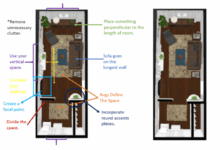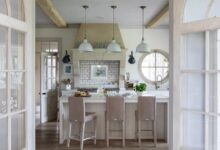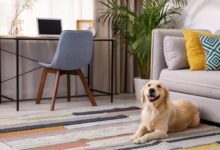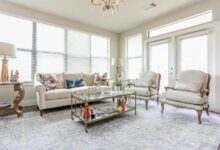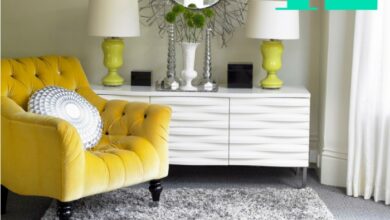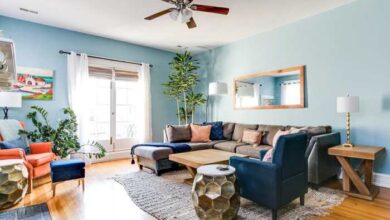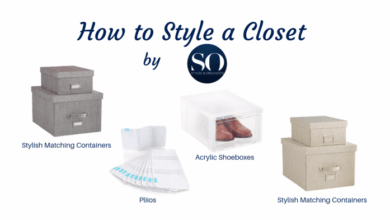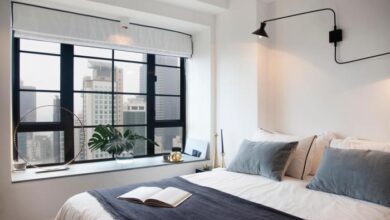Scandinavian Interior Design Clean, Calm, And Timeless
Scandinavian Interior Design Clean Calm and Timeless invites you to explore a design philosophy that embraces simplicity, functionality, and warmth. Born from the harsh climates of Northern Europe, this style reflects a deep respect for nature, comfort, and the art of living with less. Its roots trace back to a cultural commitment to sustainability and minimalism, resulting in spaces that feel both inviting and serene.
This design approach highlights essential elements such as neutral color palettes, natural materials, and a focus on light, creating a harmonious environment. By blending modern aesthetics with traditional influences, Scandinavian design offers a unique way to enhance your living space while nurturing a sense of tranquility.
Introduction to Scandinavian Interior Design
Scandinavian interior design embodies a philosophy that prioritizes simplicity, functionality, and a connection to nature. This style emerged in the early 20th century in the Nordic countries, where minimalism and clean lines became essential in both architecture and decor, reflecting the harsh yet beautiful environments of Denmark, Norway, Sweden, Finland, and Iceland. The result is a harmonious blend of elegance and practicality that resonates with many people worldwide.Historically, Scandinavian design has been influenced by cultural movements and social changes, particularly the rise of modernism in the mid-1900s.
The Bauhaus and functionalist movements played significant roles, emphasizing the need for designs that were both beautiful and practical. These influences led to an aesthetic that celebrates craftsmanship while embracing sustainable practices. The core principles of Scandinavian design revolve around minimalism, functionality, and the use of natural materials, creating spaces that are both inviting and serene.
Key Characteristics of Scandinavian Design
Understanding the key characteristics that define Scandinavian interior design helps to appreciate its unique charm. These traits serve to create spaces that foster peace and simplicity, making them ideal for modern living. The following aspects distinguish Scandinavian design:
- Minimalism: A focus on simplicity and decluttered spaces allows for functional living without excess.
- Natural Light: Large windows and light color palettes enhance the natural light, making interiors feel bright and open.
- Neutral Color Schemes: Soft whites, grays, and muted tones create calm and balanced environments, often complemented by warm wood accents.
- Natural Materials: Wood, leather, and textiles are commonly used, reflecting a connection to nature that is vital in Nordic culture.
- Functionality: Every piece of furniture serves a purpose, often designed for dual functionality to maximize space.
- Cozy Elements: Textiles like wool, furs, and soft linens are included to add warmth and comfort, creating a welcoming atmosphere.
The balance between aesthetic appeal and practicality leads to spaces that can be both stylish and livable. Embracing these characteristics allows individuals to create homes that are not only visually pleasing but also promote well-being and relaxation.
Key Elements of Scandinavian Design
Scandinavian interior design is defined by its simplicity and functionality, reflecting the lifestyle of the Nordic countries. Emphasizing a connection with nature and an appreciation for craftsmanship, this design approach fosters a serene and welcoming atmosphere in living spaces. The key elements of Scandinavian design encompass color palettes, materials, natural light, functional furniture, and minimalism, all working harmoniously to create elegant yet practical interiors.Central to Scandinavian design is the thoughtful selection of color palettes and materials that evoke calmness and comfort.
The colors typically reflect the natural environment, incorporating soft whites, muted grays, and earthy tones that promote tranquility. These hues are often complemented by organic materials such as wood, wool, and leather, which add warmth and texture to spaces.
Color Palettes and Materials
The color choices and materials in Scandinavian interiors are not merely aesthetic; they are essential in creating an inviting atmosphere. The following points highlight the significance of each:
- Neutral Colors: Soft whites and pale grays are foundational, providing a clean canvas for other design elements.
- Earthy Tones: Shades of beige, brown, and green are employed to introduce a sense of nature and tranquility, connecting indoors with the outdoor environment.
- Natural Materials: Wood is prominently featured, often in light finishes, to enhance warmth and authenticity; textiles such as wool and cotton add comfort and softness.
Natural light plays a crucial role in Scandinavian design, given the long, dark winters experienced in Nordic countries. The design ethos strives to maximize natural light, creating bright and airy spaces that feel larger and more open. Large windows are commonplace, often left unadorned or dressed with light fabrics to allow as much light as possible to enter.
Natural Light Utilization
The effective use of natural light in Scandinavian interiors fosters a connection to the outdoors and greatly influences the mood of the space. Consider the following aspects:
- Large Windows: Expansive glass panes are designed to invite light, creating a seamless transition between inside and outside.
- Reflective Surfaces: Mirrors and glass accents are utilized to bounce light throughout a room, enhancing brightness and creating a sense of spaciousness.
- Light Colors: The use of light colors on walls and furnishings helps to reflect natural light, further amplifying the luminous quality of the space.
Functional furniture is a hallmark of Scandinavian design, characterized by its practicality without sacrificing style. This approach emphasizes the importance of versatile pieces that serve multiple purposes, catering to the needs of modern living.
Significance of Functional Furniture
The essence of furniture in Scandinavian interiors revolves around utility and simplicity. The following elements illustrate its significance:
- Multi-functional Pieces: Items such as sofa beds, extendable dining tables, and storage ottomans are common, allowing for flexibility in use.
- Simplicity in Design: Clean lines and minimal ornamentation create a timeless appeal, ensuring that furniture remains relevant across design trends.
- Quality Craftsmanship: Emphasis on well-made furniture ensures longevity and sustainability, reflecting a deep respect for artistry and raw materials.
Color Schemes and Textures
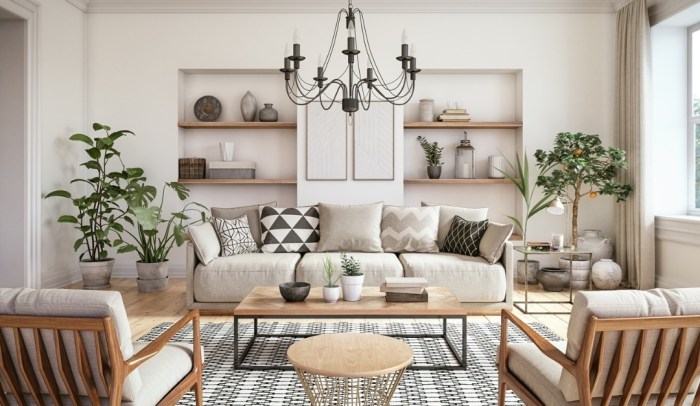
Source: rismedia.com
Scandinavian interior design is celebrated for its serene and inviting ambiance, largely attributed to its thoughtfully chosen color schemes and textures. The palette often consists of soft, muted tones that create a sense of calm and spaciousness, making these spaces feel both warm and airy. By emphasizing neutrality, Scandinavian designs foster an environment that encourages relaxation and mindfulness, ideal for modern living.The color schemes commonly embraced in Scandinavian design revolve around a base of whites, grays, and beiges, accented by subtle pastels or deep, earthy tones.
This deliberate selection allows for a harmonious blend that is visually soothing and timeless. The interplay of these colors creates a serene backdrop that complements the textures found within the spaces.
Common Color Schemes
The simplicity and elegance of Scandinavian interiors are often expressed through the following color schemes:
- Monochromatic Palettes: Variations of a single color, particularly shades of white and gray, provide a unified and expansive feel.
- Neutral Base with Accent Colors: Utilizing a base of soft whites or light grays, accent colors like muted blues or gentle yellows can add character without overwhelming the senses.
- Earthy Tones: Shades inspired by nature, such as soft browns, greens, and rust, connect the interior with the outdoor environment, creating a cozy and grounded atmosphere.
Textures play a pivotal role in enhancing the overall aesthetic of Scandinavian design, fostering a sense of warmth and coziness even in the most minimalistic spaces.
Textural Elements
In Scandinavian interiors, various textures are employed to add depth and interest to the design. These textures include:
- Natural Wood: Light woods like birch, pine, and ash are prevalent, often used for flooring, furniture, and architectural details, offering warmth and a connection to nature.
- Soft Textiles: Fabrics such as wool, cotton, and linen are frequently used in cushions, throws, and curtains, providing comfort while balancing the hard surfaces of wood and metal.
- Stone and Concrete: Elements like rough stone walls or polished concrete floors introduce an industrial touch, grounding the design and contrasting beautifully with softer materials.
The thoughtful integration of color and texture significantly influences the mood of Scandinavian spaces.
Color and Mood Relationship
In Scandinavian interiors, the interplay of colors and textures creates an inviting atmosphere that profoundly impacts residents’ emotions.
“Color can evoke feelings, set moods, and even alter perceptions of space.”
Pale colors, particularly whites and light grays, can make rooms feel more spacious and airy, fostering a sense of tranquility. Meanwhile, warmer earth tones add a layer of comfort, creating a nurturing environment that feels lived-in and welcoming. The careful balance of soft colors with rich textures enables the creation of spaces that are not only aesthetically pleasing but also emotionally resonant, promoting peace and well-being in everyday life.
Furniture Selection and Arrangement
Selecting the right furniture is essential in achieving the clean, calm, and timeless aesthetics that Scandinavian interior design embodies. Iconic pieces not only serve functional purposes but also contribute to the overall ambiance of a space. Arranging furniture thoughtfully enhances both the functionality and flow of a room, allowing for a harmonious living environment.
Iconic Furniture Pieces in Scandinavian Design
Several furniture pieces stand out as quintessential elements in Scandinavian design, each reflecting the simplicity and functionality characteristic of this style.
- Hans J. Wegner’s Wishbone Chair: This chair combines form and function with its unique design, offering comfort while being visually striking.
- Arne Jacobsen’s Egg Chair: An iconic piece, it provides both style and comfort, becoming a focal point in any room.
- Finn Juhl’s Pelican Chair: This chair showcases organic shapes and luxurious materials, embodying the essence of Danish modern design.
- Muuto’s Fiber Chair: A contemporary take on the classic Scandinavian style, it highlights minimalism and sustainable design.
- Hay’s About a Chair: Versatile and adaptable, this chair fits seamlessly in various settings, blending with different styles.
Furniture Arrangement for Functionality and Flow
Arranging furniture in a Scandinavian-inspired room requires consideration of both aesthetics and practicality. The goal is to create an inviting and functional space that encourages natural movement and interaction. Begin by establishing a focal point, such as a fireplace or a large window, and arrange furniture around this element to draw attention. Keep pathways clear to promote flow, ensuring that movement within the room is unhindered.
“A well-arranged space enhances the functionality, making it not only beautiful but also livable.”
In a living room, for instance, consider the following tips:
- Place sofas and chairs in a conversational arrangement, ensuring they are within a comfortable distance.
- Use multi-functional furniture, such as ottomans that serve as both seating and storage.
- Incorporate side tables to provide surfaces for drinks or books, enhancing usability without cluttering the space.
- Utilize rugs to define areas, such as a reading nook or a cozy seating arrangement, creating a sense of intimacy.
Mixing Modern with Traditional Scandinavian Furniture Styles
Combining modern and traditional Scandinavian furniture can create a dynamic and personalized space. The key is to maintain a balance, ensuring that both elements complement rather than clash with each other.Select a few iconic traditional pieces, such as a classic wooden dining table or a vintage armchair, and pair them with modern furnishings like sleek, minimalist stools or contemporary lighting fixtures.
“The beauty of Scandinavian design lies in its ability to harmonize the old with the new, creating spaces that feel both timeless and fresh.”
When mixing styles, consider these tips:
- Choose a consistent color palette to unify both modern and traditional elements, ensuring a cohesive look.
- Vary textures to add depth, incorporating natural materials like wood and wool alongside metal or glass.
- Balance proportions by selecting furniture that complements each other in size and scale, avoiding visual clutter.
- Emphasize functionality, ensuring that each piece serves a purpose while fitting seamlessly into the overall design.
Lighting in Scandinavian Interiors
In Scandinavian interior design, lighting plays a pivotal role in creating a harmonious and inviting atmosphere. With long, dark winters prevalent in Nordic regions, the careful selection and arrangement of both natural and artificial lighting is essential to enhance the space’s tranquility and functionality. A well-lit home not only elevates the aesthetic appeal but also contributes to overall well-being by promoting a sense of calm and comfort.Natural light is prioritized in Scandinavian interiors, often maximized through large windows and open layouts.
This design philosophy encourages the flow of light throughout the space, creating a warm and airy environment. In addition to natural light, the use of thoughtfully chosen artificial lighting can significantly enhance the ambiance. Scandinavian lighting fixtures often reflect minimalism and functionality, ensuring they serve both practical and decorative purposes.
Key Lighting Fixtures in Scandinavian Design
When considering lighting in Scandinavian interiors, several iconic fixtures exemplify the design’s essence. These pieces not only illuminate spaces but also contribute to the overall aesthetic.
- PH Lamp: Designed by Poul Henningsen, the PH lamp features a unique three-shade system that diffuses light beautifully, creating a soft glow while minimizing glare. Its sculptural form adds an artistic touch to any room.
- Arne Jacobsen’s AJ Lamp: Known for its sleek, angular design, the AJ lamp serves as both a functional task light and an eye-catching piece. Its adjustable shade allows for versatility in directing light where needed.
- Muuto’s Unfold Pendant: This modern pendant light, made from silicone, combines a playful design with practicality. Its soft, diffused light makes it ideal for dining areas or cozy nooks.
- Louis Poulsen’s Toldbod Series: These minimalist fixtures come in various sizes and colors, making them perfect for layering and creating depth in lighting design. Their timeless quality ensures they fit seamlessly into any Scandinavian interior.
Layering Lighting in a Scandinavian Space
Effective layering of lighting is crucial in Scandinavian design to achieve a balanced and inviting atmosphere. By combining different types of lighting, such as ambient, task, and accent lighting, one can enhance the functionality and mood of each space.To create a well-lit environment, consider the following strategies for layering lighting:
- Ambient Lighting: This serves as the primary source of illumination, often provided by ceiling fixtures or large windows. Ensure the ambient light is soft and diffused to maintain a calm atmosphere.
- Task Lighting: Utilize specific fixtures like table lamps and floor lamps to illuminate areas where activities are performed, such as reading or cooking. Adjustable lighting can enhance usability and focus.
- Accent Lighting: Highlight art pieces, architectural features, or decorative elements with spotlights or wall sconces. This adds depth to the design and draws attention to focal points.
- Dimmer Switches: Installing dimmer switches allows control over the intensity of light, enabling you to adjust the ambiance according to the time of day or occasion.
Incorporating these layers of lighting not only enhances the aesthetic of Scandinavian interiors but also ensures a harmonious balance between functionality and beauty, creating spaces that feel both inviting and serene.
Incorporating Nature into Design
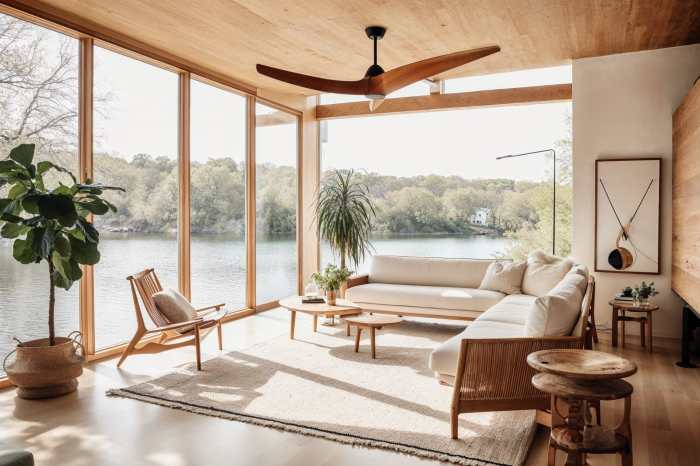
Source: decorilla.com
Integrating nature into Scandinavian interior design is essential for creating spaces that feel serene and inviting. The concept of ‘hygge’, which emphasizes comfort and coziness, aligns perfectly with the natural elements found in Scandinavian aesthetics. This philosophy fosters a deep connection with the environment, bringing warmth and tranquility into the home.To achieve this harmony, consider various methods for incorporating natural elements into interior spaces.
Large windows can provide stunning outdoor views, allowing natural light to flood in and creating a seamless transition between the indoors and outdoors. Additionally, the use of organic materials, such as wood and stone, can enhance the natural feel of a room. The thoughtful placement of plants can further enliven the space, introducing vibrant colors and fresh air.
Indoor Plants for Scandinavian-Style Homes
Plants play a crucial role in enriching Scandinavian interiors, contributing to a fresh and lively atmosphere. Here are some indoor plants that thrive in this design style, each bringing its unique charm and character:
- Snake Plant (Sansevieria): Known for its resilience, the snake plant features tall, upright leaves that add a touch of modern elegance. It thrives in low light and requires minimal care.
- Pothos (Epipremnum aureum): This trailing vine is perfect for hanging baskets or shelves, providing a lush, cascading effect. Pothos is adaptable and can grow in various lighting conditions.
- Peace Lily (Spathiphyllum): With its glossy, dark green leaves and white blooms, the peace lily brings a serene beauty to any room. It prefers indirect light and is known for its air-purifying qualities.
- Fiddle Leaf Fig (Ficus lyrata): This statement plant features large, violin-shaped leaves that can elevate the aesthetic of any space. It thrives in bright, filtered light and can grow quite tall, making it a striking focal point.
- ZZ Plant (Zamioculcas zamiifolia): The ZZ plant is exceptionally low-maintenance and boasts glossy, waxy leaves that reflect light beautifully. It tolerates low light and infrequent watering, making it ideal for busy homes.
- Spider Plant (Chlorophytum comosum): Recognized for its arching leaves and baby plant offsets, the spider plant is easy to care for and thrives in various light conditions. It adds a playful touch to any corner.
Incorporating these plants into your home not only enhances the aesthetic appeal but also promotes a healthier living environment. Embracing nature in design truly embodies the Scandinavian philosophy of creating spaces that are clean, calm, and timeless.
Personalizing Scandinavian Spaces
In Scandinavian interior design, the emphasis on simplicity and functionality can sometimes create a sense of uniformity. However, personal touches can infuse warmth and character into these spaces, making them truly unique. Personalization is about balancing individuality with the core principles of clean lines, natural materials, and a calming color palette.To effectively personalize a Scandinavian interior, it is essential to incorporate elements that resonate with your identity and experiences, while still aligning with the aesthetic of the design.
This can be achieved through thoughtful selections of art, decor, and cultural influences that enhance the overall tranquility of the space.
Artwork and Decor Suggestions
Artwork and decor play a significant role in reflecting personal style within a Scandinavian design framework. When selecting pieces, consider those that evoke a sense of calm and complement the minimalist ethos. Here are some suggestions for artwork and decor that align beautifully with Scandinavian aesthetics:
- Abstract paintings in muted tones: Choose large canvas artworks that utilize the soft, natural color palette typical of Scandinavian design.
- Black and white photography: Frame striking monochrome photos that can evoke memories or signify personal moments, enhancing the story behind the space.
- Textile art: Incorporate woven wall hangings or fabric art that adds texture while adhering to the minimalist aesthetic.
- Handcrafted ceramics: Display unique pottery pieces that can serve as functional decor while highlighting craftsmanship.
- Nature-inspired prints: Artwork that features botanical or scenic landscapes can tie the indoors to the natural world, reinforcing the Scandinavian connection to nature.
Blending Cultural Influences
Integrating cultural influences into a Scandinavian design approach can create a rich and inviting atmosphere. This blending can enhance the personal narrative of the space while respecting the foundational principles of Scandinavian aesthetics. Consider the following ways to incorporate cultural elements:
- Traditional textiles: Use throws, cushions, or rugs with patterns from your heritage that resonate with the simplicity of Scandinavian design.
- Artisan crafts: Include handmade items from local artisans that reflect your cultural background, adding unique character and stories to the space.
- Color infusions: While Scandinavian design often employs a neutral color palette, you can introduce subtle accents of colors from your culture to create focal points.
- Global decor items: Curate decor that represents various cultural elements, such as a Moroccan lantern or an African sculpture, to foster a sense of global harmony.
- Personal mementos: Display items from travels or important life events, such as a framed map or souvenirs, that narrate your personal journey within the space.
“Personal touches in Scandinavian interiors breathe life into simplicity, transforming a serene environment into a cherished reflection of individuality.”
Sustainable Practices in Scandinavian Design
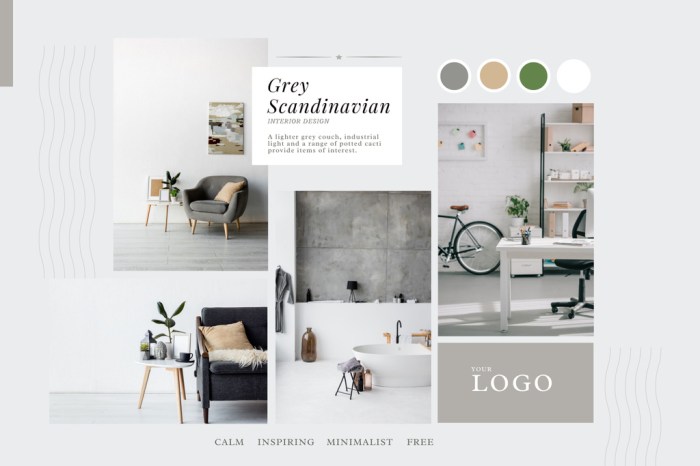
Source: vista.com
Scandinavian interior design is not just about aesthetics; it embodies a deep respect for nature and a commitment to sustainability. This design philosophy prioritizes eco-friendliness, ensuring that spaces are not only beautiful but also responsible. The core belief is that a harmonious relationship with the environment leads to a healthier and more fulfilling lifestyle.Sustainability in Scandinavian design manifests in various ways, from the selection of materials to the principles of construction and organization of spaces.
Designers emphasize using resources that minimize environmental impact while creating a cozy, inviting atmosphere. This approach reflects a broader cultural commitment in Scandinavian countries to protect nature and promote sustainability.
Examples of Sustainable Materials and Practices
Incorporating sustainable materials and practices into Scandinavian design is essential for creating environmentally friendly interiors. The emphasis on natural materials helps maintain the balance between aesthetic appeal and ecological responsibility. Here are some key examples:
- Bamboo: Fast-growing and renewable, bamboo is a popular choice for flooring and furniture, offering durability and a modern look.
- Recycled Wood: Utilizing reclaimed timber not only gives a unique character to spaces but also reduces the demand for new materials.
- Organic Textiles: Fabrics made from organic cotton, linen, or wool are commonly used in Scandinavian interiors, ensuring that no harmful chemicals pollute the environment.
- Low-VOC Paints: Paints with low volatile organic compounds are essential for maintaining indoor air quality while allowing for beautiful color schemes.
- Natural Stone: Materials such as granite or marble sourced from sustainable quarries provide elegance while being environmentally friendly.
Creating a timeless design while considering environmental impact involves selecting enduring styles and materials that will last for generations. The use of multifunctional furniture, such as modular sofas or extendable dining tables, not only maximizes space but also reduces waste by adapting to changing needs over time. Moreover, fostering a connection with nature is a crucial element of sustainable Scandinavian design.
Incorporating biophilic elements, such as indoor plants or natural light through large windows, creates a serene environment that benefits both the mind and the planet. The overall goal is to ensure that designs remain relevant and functional, reflecting a lifestyle that cherishes both beauty and sustainability.
Final Wrap-Up
In conclusion, Scandinavian Interior Design Clean Calm and Timeless is more than just a style; it is a way of life that encourages you to create spaces that breathe, inspire, and bring joy. By embracing its core principles, you can transform your home into a serene retreat where every element serves a purpose and evokes a sense of peace. As you delve into this design world, let its beauty and simplicity guide you toward a more harmonious way of living.
FAQ Insights
What are the main characteristics of Scandinavian design?
The main characteristics include minimalism, functionality, natural materials, neutral color palettes, and an emphasis on light.
Why is natural light important in Scandinavian interiors?
Natural light enhances the sense of space, warmth, and comfort, which are central to the Scandinavian aesthetic.
What role does sustainability play in Scandinavian design?
Sustainability is crucial as it reflects a commitment to eco-friendly practices, using materials that are both durable and environmentally responsible.
How can I personalize a Scandinavian-style space?
You can personalize a Scandinavian space by adding unique artwork, family heirlooms, or decorative textiles while maintaining the overall simplicity.
What indoor plants are suitable for Scandinavian homes?
Plants like snake plants, peace lilies, and pothos thrive in Scandinavian-style homes, enhancing the natural atmosphere.

